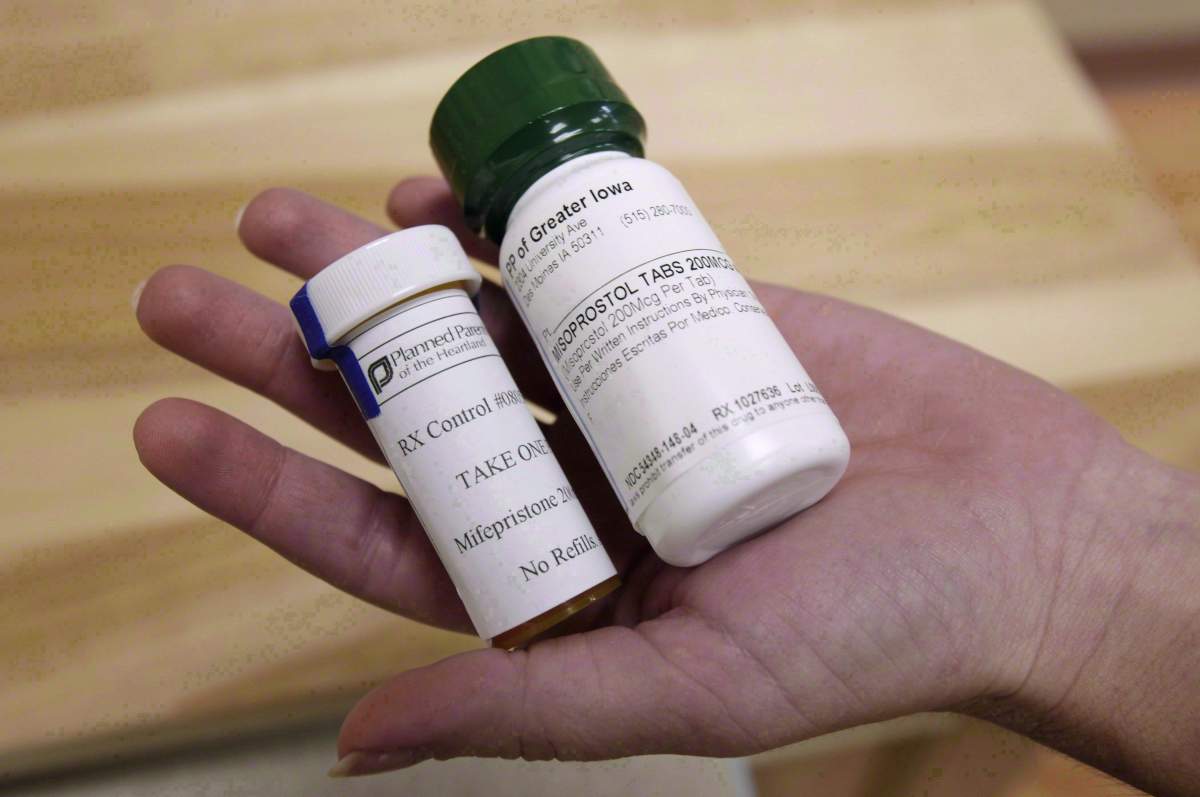Doctors in Canada can now prescribe Mifegymiso — otherwise known as the abortion pill — without needing to conduct an ultrasound.

Health Canada removed one of the remaining barriers to access of the pill on Tuesday, which women’s health advocates have argued places a disproportionate burden on rural and precariously employed or low-income women for whom access to ultrasound clinics and multiple medical appointments (and the associated time off work required to get to them) within a short time period can be very difficult.
READ MORE: Abortion pill prescriptions likely to rise after 4,253 women used new option last year
“With the changes to the product monograph, prescribers now have the flexibility to use their medical judgment on how best to determine the gestational age and to rule out an ectopic pregnancy,” said a news release by Health Canada.
“It also responds to concerns that some patients may have been facing unnecessary barriers or delays in accessing this product. The product monograph still recommends an ultrasound when the gestational age is uncertain or an ectopic pregnancy is suspected.”
Mifegymiso is a combination of two pills that are prescribed by a doctor (or in some provinces, also by a nurse practitioner) for patients who want to end a pregnancy up to nine weeks along.
It is not authorized for prescription beyond nine weeks of gestation or in cases involving an ectopic pregnancy.
However, previous instructions had mandated that doctors had to conduct an ultrasound prior to prescribing the medication.
WATCH BELOW: Health Canada approves pill as non-surgical abortion option for early pregnancy
That meant that patients faced longer waits to get the medication, particularly in areas where there may be longer wait times for ultrasound clinics, where such facilities may be far away from home, or where having to take time off work for multiple medical appointments could be a burden.
Given the short window in which the drug can be prescribed, that meant women could find themselves unable to access a medical abortion if they were not able to recognize the signs of a pregnancy, confirm it with a doctor, decide on their course of action, and make it to multiple medical appointments within that time.

Get daily National news
Sexual health advocates have long urged the government to remove the ultrasound requirement.
Many of the groups quickly praised the decision, saying it will reduce the barriers to access that an ultrasound requirement imposes.
“This is one step in the right direction to continue to address barriers that make access to medical abortion challenging in regions where services are few and far between or plagued with long wait lists.”
The pill offers a non-surgical option to end a pregnancy and is publicly funded in all but two provinces across the country.
It was first approved in 2015 but only became available to the public in January 2017 under tight restrictions.
Those restrictions were loosened in November 2017 and in April 2018, statistics collected by the federal government showed it had been prescribed 4,253 times during that first year of availability, despite the restrictions being in place for much of that.
Only one adverse reaction — heavy bleeding — was reported during that time.








Comments